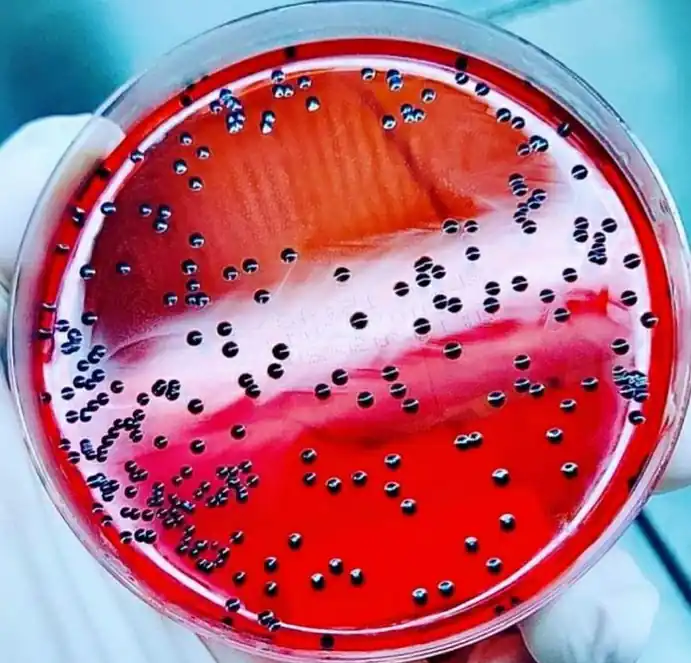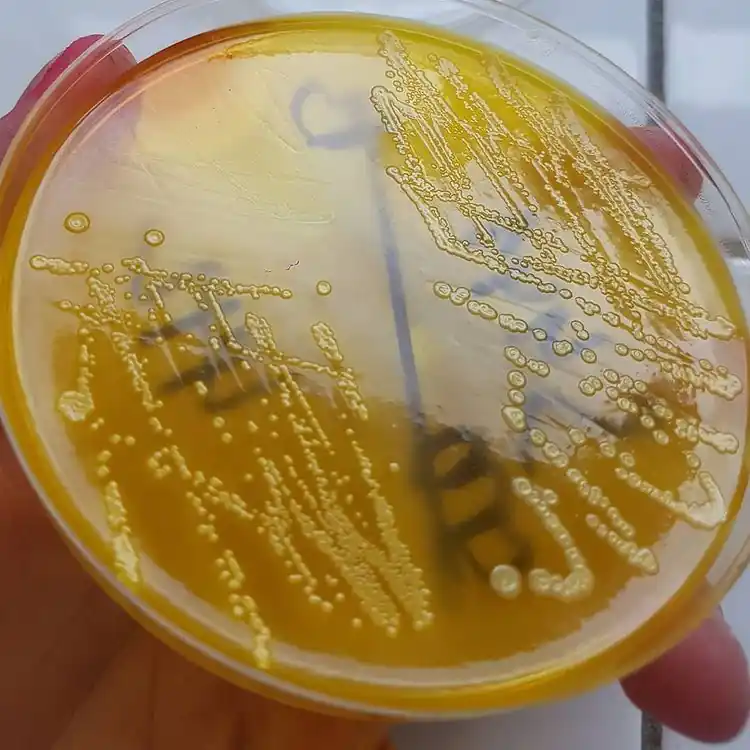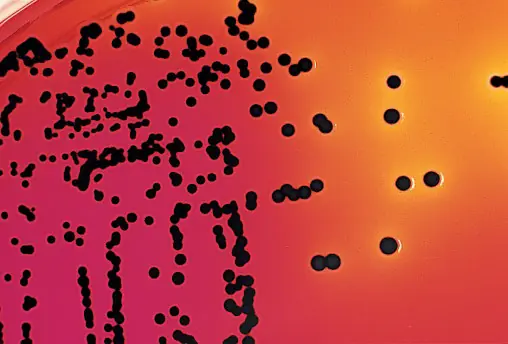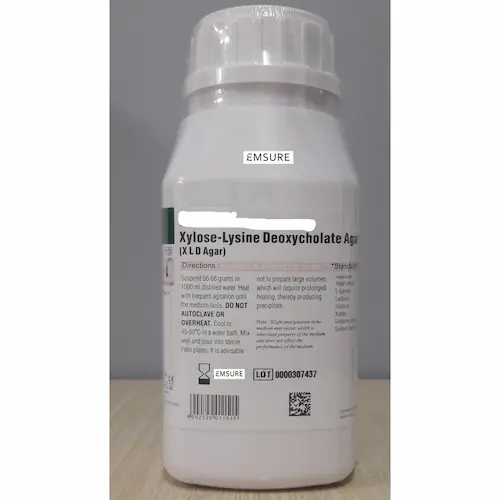◈ Selectivity : The selective agent is sodium deoxycholate, a bile salt, which inhibits the growth of gram-positive organisms.
◈ Differentiation : Is done by three indicator systems
- Xylose, lactose and sucrose, together with phenol red, are fermentable carbohydrates. Fermentation of sugars brings the pH of the medium to an acidic state and the color of the medium turns yellow
- The decarboxylation of lysine, in the absence of lactose and sucrose fermentation, results in a return to an alkaline pH. This alkaline pH brings back the red color of the medium.
- Sodium thiosulfate and ferric ammonium serve as indicators of hydrogen sulfide (H2S) production under alkaline conditions

Salmonella can be differentiated from members of the normal enteric microbiota by three reactions: fermentation of xylose, decarboxylation of lysine, and production of hydrogen sulfide.(@eumicrobiologia)

E.coli on XLD agar(@rado.kulich)
⚡ Organisms unable to utilize carbohydrates, such as Shigella and Edwardsiella, will not produce any significant changes and therefore colonies and medium will remain red after incubation
⚡ Organisms capable of fermenting xylose only, such as Salmonella, will deplete the xylose supply and start using lysine thereby changing the pH to alkaline and the color returning to red. However, the presence of Salmonella and Edwardsiella spp is differentiated from that of shigella by an indicator of hydrogen sulfide.
⚡ Other uninhibited organisms capable of fermenting lactose or sucrose will produce yellow colonies due to continued acid production, the high level of acid produced prevents the pH from returning to an alkaline value, and d 'a resulting change in pH. These organisms include Escherichia, Klebsiella, Serratia, Citrobacter koseri, Yersinia enterocolitica.
⚡ Yellow colonies are also observed for lysine-negative organisms, such as Proteus species.
⚡ The inclusion of an H2S indicator system composed of sodium thiosulphate and ferric ammonium citrate improves the differentiation capacity of the preparation: this makes it possible to visualize the production of hydrogen sulphide, which causes the formation of colonies with black centers.
| Bacteria | Growth | Results |
|---|---|---|
| Salmonella H2S positive, Edwardsiella | Good | Red colonies with black center |
| Shigella spp. et Salmonella H2S negative, Providencia | Good | Red colonies |
| E. coli | Partial inhibition | Yellow colonies |
| Enterobacter / Klebsiella | Partial inhibition | Yellow colonies / Yellow and mucoid colonies |
| Proteus | Red to yellow colonies, some strains of Proteus will give colonies with a black center | |
| Pseudomonas | Partial inhibition | Red colonies "Shigella-like" |
| Enterococcus | Inhibited | / |
| Gram-positive bacteria | Inhibited | / |

